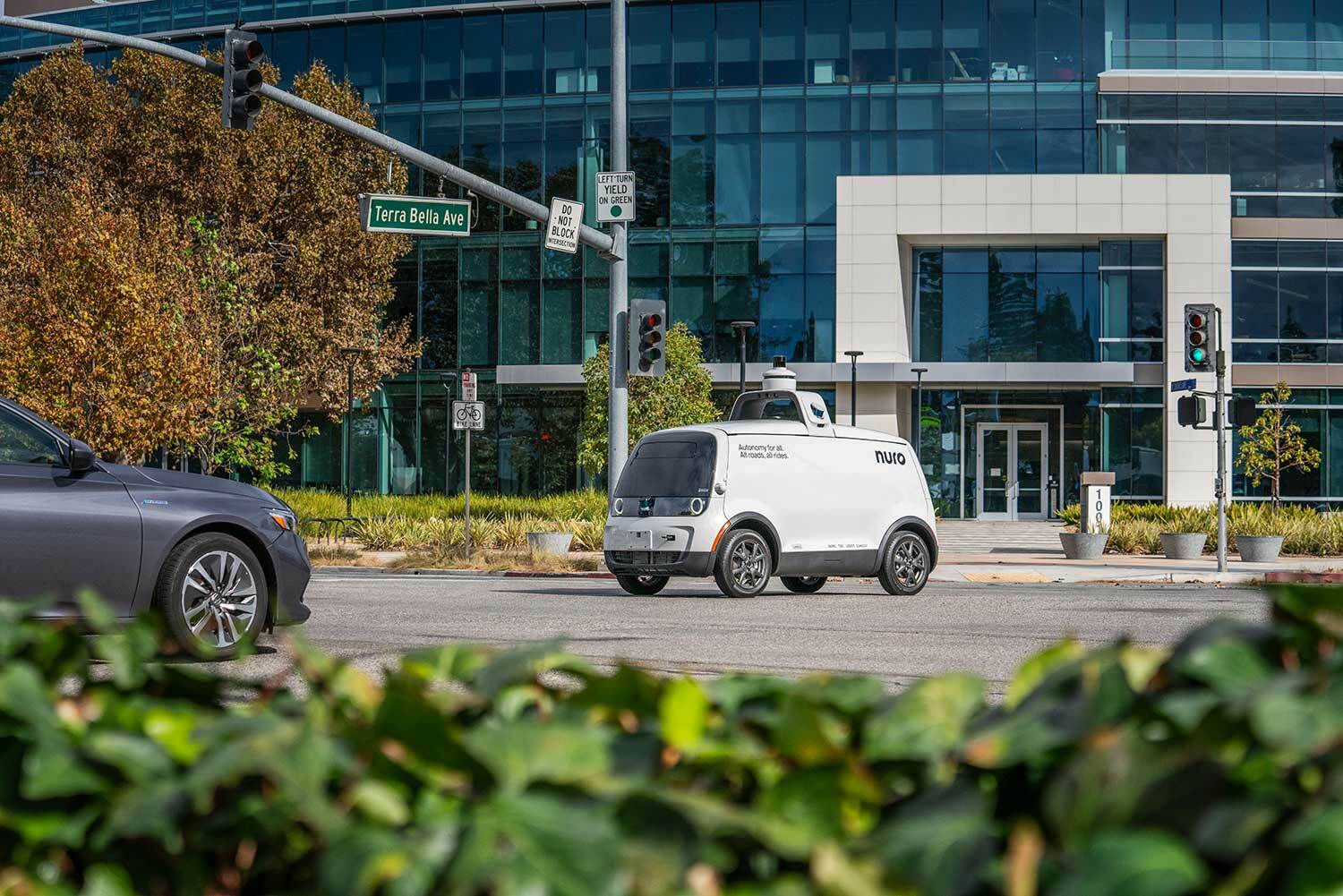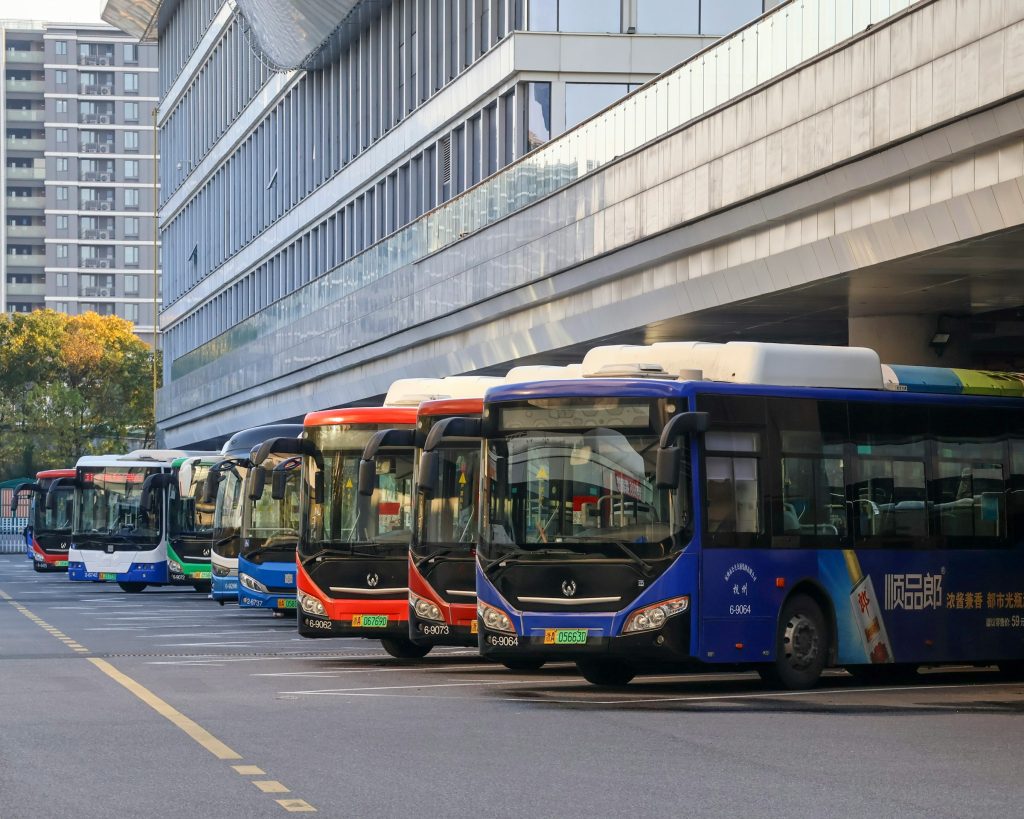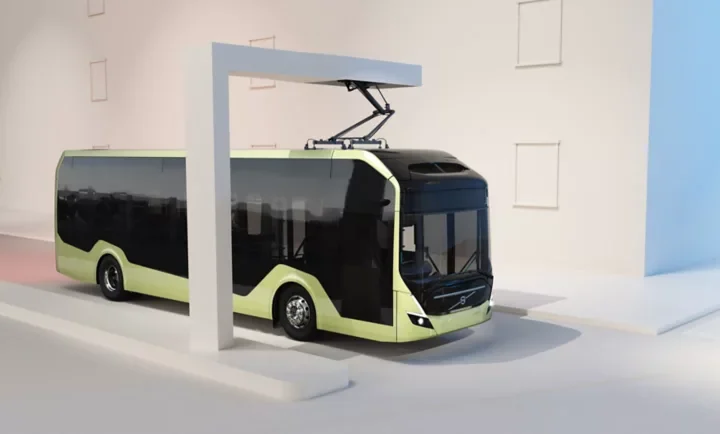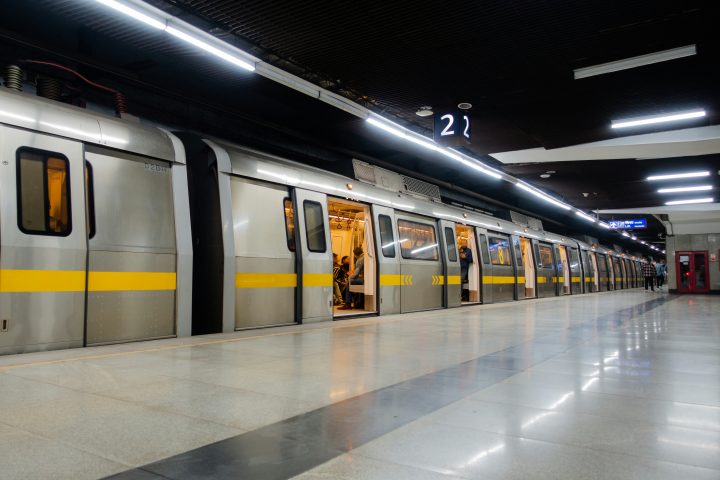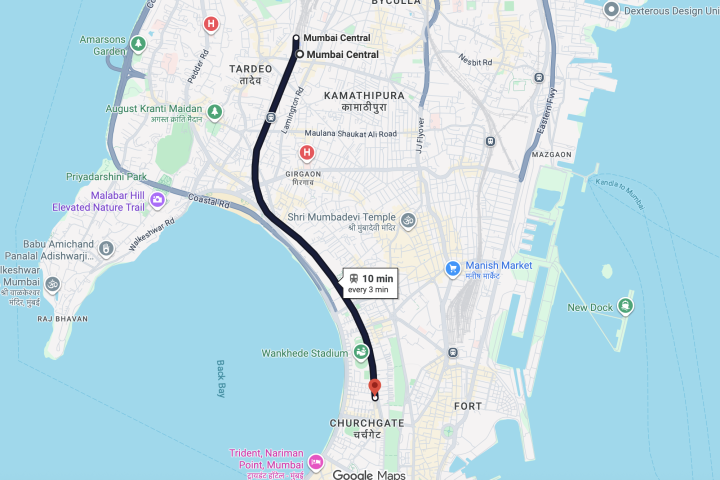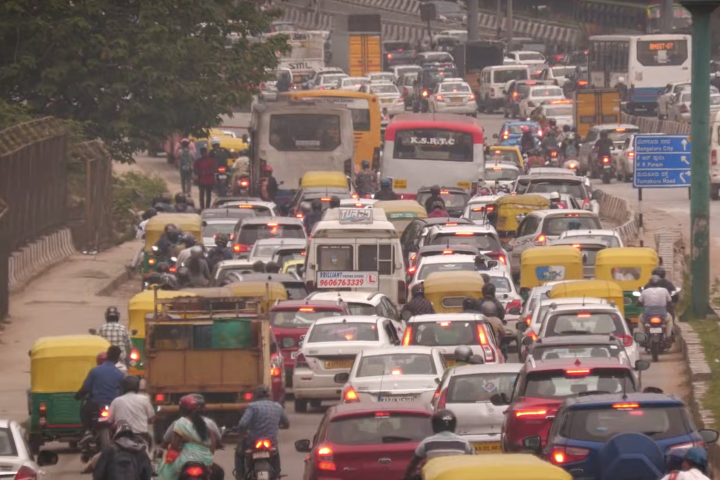Autonomous vehicles are already making their way into many cities across the world. Companies and researches are working round the clock to integrate sensors, data and AI to make all cars autonomous by default.
The autonomous vehicle market is expected to grow exponentially over the next few years. According to a recent research by Precedence Research, the global autonomous vehicle market size was estimated USD 158.31 billion in 2023 and is projected to hit around USD 2,752.80 billion by 2033.

While this is a good development for many countries, it is quite challenging for developing countries like India to adopt it given its chaotic urban landscape.
It’s not just the passenger vehicle segment that is witnessing an uptick; several other categories, such as defense, delivery trucks, and buses, are either undergoing trials or operating in limited capacities in the real world. Bloomberg thinks that this year (2025) could be a breakout year for autonomous vehicle industry.
Taxi companies embrace self-driving tech

Waymo(formerly known as the Google Self-Driving Car Project) a ride-hailing service, operates a fully autonomous vehicle fleet. Tesla is also in the race with its recently unveiled “Robo Taxi” concept.
Traditional players like Uber are teaming up with AI chip makers like NVIDIA to support the development of autonomous vehicle technology.
Autonomous motorcycles
Not to be left behind, the two-wheeler industry is also integrating autonomous vehicle tech into its motorcycles and scooters.
BMW Motorrad has unveiled a self-riding prototype of its R 1200 GS adventure tourer at CES 2019 in Las Vegas. This autonomous motorcycle can independently handle all key riding functions, including starting, accelerating, cornering, slowing down, and coming to a complete stop – completely eliminating the need for human control.
Public transport will get better
Turning public transport systems into fully autonomous mode of travel should probably be easier and a low hanging fruit. The technology has already been deployed in Metro trains across the world.
Singapore is planning to trial with smaller buses which can seat at least 16 passengers. The country has a plan for initial fleet of six autonomous buses, which will operate alongside existing manned services from mid-2026 for three years.
Companies like San Jose based Imagry provide an HD-mapless L4 autonomous driving solution for buses on public roads and in operational zones. The company, retrofits conventional electric buses with its autonomous driving technology and supplies the upgraded vehicles to municipal transit agencies.
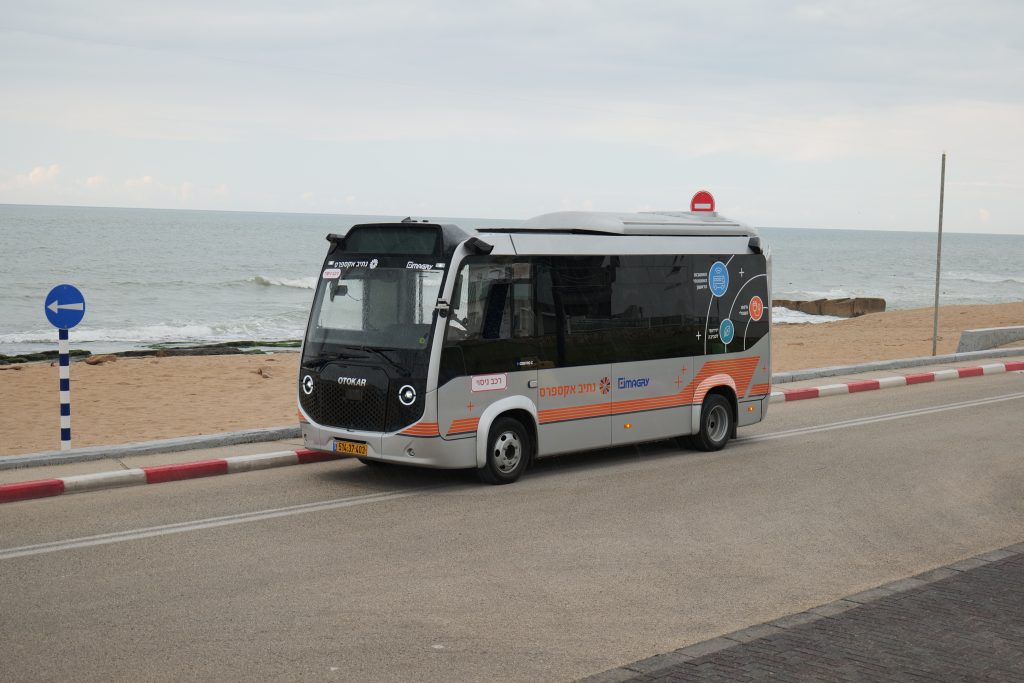
Several other cities in the world are either in evaluation phase or are conducting first set of trials to understand their viability. Japanese city Kumamoto, is aiming for year-round operation in Kyushu’s first Level 2 autonomous bus trial starting February 2025.
Regulation of electric vehicles
When you do not have a human at the driver’s seat, new laws need to be introduced and old ones need to be modified.
California has introduced laws this year that specifically apply to autonomous vehicles. UK meanwhile, is preparing to enact Automated Vehicles Law by 2026. The law will mandate that self-driving vehicles must meet safety standards equivalent to those of careful and competent human drivers, in addition to undergoing stringent safety assessments before being permitted on the roads.
In 2022, Japan amended the Road Traffic Act to introduce a permit system for specified automated driving, which is equivalent to level 4 automation without a human driver.
Autonomous Delivery Vehicles and Trucks
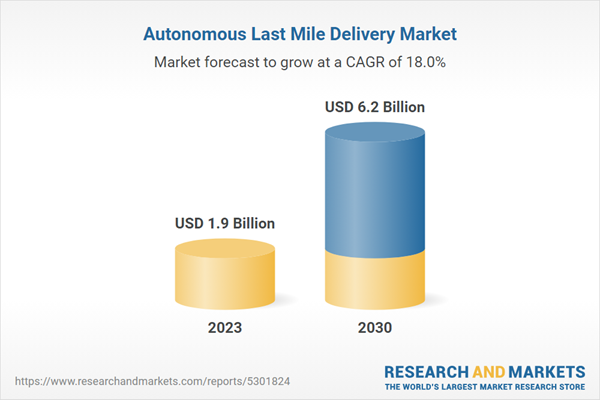
The Autonomous Last Mile Delivery market was valued at approximately $1.9 billion in 2023 and is expected to grow to $6.2 billion by 2030.
What’s driving this growth? Advancements in AI, rising e-commerce demand, and a need to have efficient delivery solutions. Autonomous vehicles operate around the clock without the labor constraints that come with traditional human drivers. They also cut pollution and make air in cities cleaner.
Some cities already have delivery robots that provide a faster, more cost-effective delivery option to the customers.
In China, FedEx has partnered with Neolix to test autonomous delivery vehicles to deliver parcels. The vehicles will feature an “interchangeable cargo box” and can carry a maximum load of approximately 500 kg.
Google’s Nuro autonomous delivery vehicles already serve certain cities in US, and now they plan to license their autonomous driving technology to outside companies.
Trucks are not left behind. In 2024, the commercialization of autonomous trucks has took off, marking a turning point for the industry. Sweden’s Einride is already running commercial operations using autonomous trucks.
China’s rapid progress
In August, the country revealed that it had granted 16,000 test licenses for driverless cars and designated approximately 20,000 miles of roads in China for autonomous vehicle testing.
Beijing plans to substantially expand its high-level autonomous driving demonstration zone to around 3,000 square kilometers. On the streets of the city, self-delivery vehicles seamlessly operate, delivering orders placed through delivery apps, some even reaching speeds of 80kmph.
China’s autonomous vehicle market size is expected to grow exponentially to reach US$ 170.57 billion by 2033 compared to US$ 17.23 billion in 2024 with the growth rate of 29.01% for the period between 2025 and 2033.

Inceptio, a developer of autonomous driving technologies for heavy-duty trucks, recently completed delivery of 400 Inceptio-powered autonomous heavy-duty trucks to Chinese Logistics service provider ZTO Express Inc.
Autonomous tech on Indian roads
India faces multiple challenges in adopting autonomous technology. Urban infrastructure is inadequate, roads are chaotic and congested, and law enforcement is weak. Lane discipline is nearly non-existent, and unexpected obstacles on the road are common.
For autonomous vehicles to be introduced, the country needs first-world urban infrastructure, disciplined driving, and strict adherence to laws by its citizens.
According to a research conducted by KPMG, India was placed at the bottom of the table in terms of “readiness for self-driving cars”.
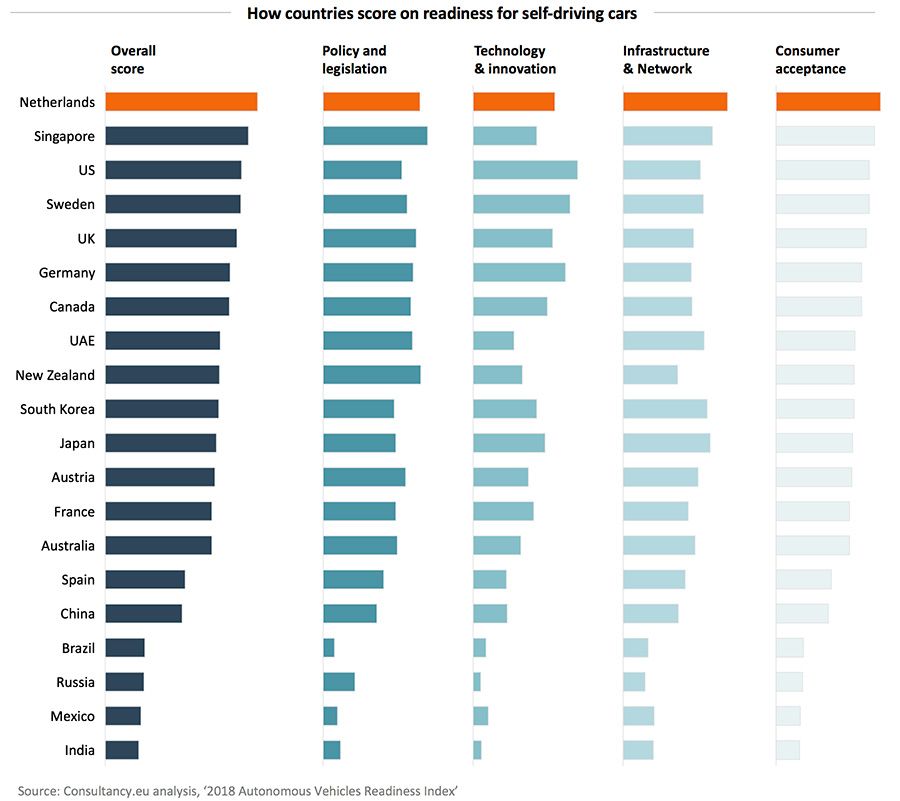
The other issue is the hesitance shown by Indian politicians in adopting autonomous vehicle technology. Nitin Gadkari, India’s Minister of Road Transport and Highways, has maintained a firm opposition to the introduction of self-driving cars. The primary concern being loss of jobs.
Recently, Bengaluru’s Joint Commissioner of Police (Traffic), MN Anucheth questioned the real need for such technology. He said “Would you spend so much for a Level 5 vehicle when hiring a driver is easier and more cost-effective here?”.
Indian startups like Swaayatt Robots and Minus Zero are trying their luck in Indian markets with home made autonomous driving tech. Swaayatt has been showcasing its retrofitted Bolero, which appears to intelligently navigate Indian roads, while Minus Zero recently announced a partnership with Ashok Leyland to develop autonomous trucking solutions for ports, factory operations, and corporate campuses.
But neither of them has any concrete plans to deploy these vehicles on our roads – the challenges are simply too many. The cars would need to undergo rigorous rounds of testing to ensure the safety of passengers and others on the road.
In the recently held Bharat Mobility Expo 2025, PM Narendra Modi said, “Now we are moving towards smart mobility. India is also working rapidly in the direction of connected vehicles and autonomous driving”. But as I highlighted above, India is simply not ready. The supporting infrastructure to make it work safely and efficiently simply does not exist. Companies will have to do many additional things in India just to make basic cases work.
Technical challenges are too many
Self-driving vehicles rely heavily on computer vision to understand road conditions. However, Indian roads present significant challenges due to the lack of clear lane markings, frequent road diversions, and mixed traffic.
This unpredictability makes it difficult for AI models to accurately detect lanes, recognize traffic signals, and anticipate movements, leading to errors in navigation. Then there are problems like frequent rule-breaking, wrong-side driving, and sudden stops.
Also, unlike Western roads where AI can rely on structured behaviors, Indian drivers often use honking, hand gestures, and eye contact to navigate. Training self-driving algorithms to adapt to this chaotic environment remains a major hurdle for autonomous vehicle deployment in India.
Social-Economic Impact
Countries adopting self-driving tech will race ahead leaving India far behind. Our country on the other hand, will continue to grapple with a high accident rate, sluggish and inefficient goods delivery, and a declining quality of life.
Getting around the city with human drivers will continue to get expensive, draining the pockets of passengers. Cars and trucks will burn more fuel for the same distance and the same amount of work.
Autonomous vehicles can also operate 24/7, resulting in faster deliveries, thereby increasing overall productivity and customer satisfaction.
Automated public transport systems, such as metros and bus rapid transit system, can enhance reliability, increase service frequency, and optimize infrastructure usage more efficiently.
Time for India to fix its cities
Indian authorities must urgently address urban infrastructure issues to ensure the seamless integration of self-driving vehicles. Without swift action, delays, cost overruns, and significant technical challenges will hinder progress and make adoption far more difficult.
Proactive planning is key to enabling a smooth, efficient transition to autonomous transport.
If you like this article, please follow Street Frontier on X and consider donating below:
